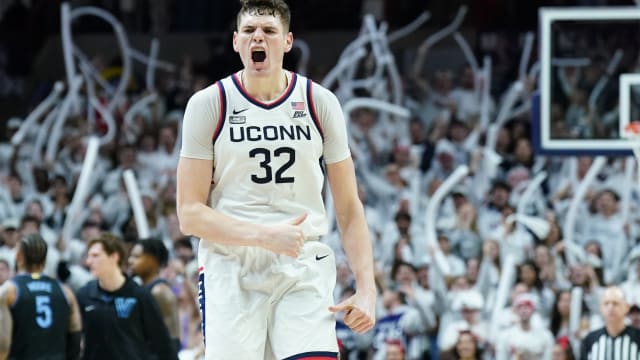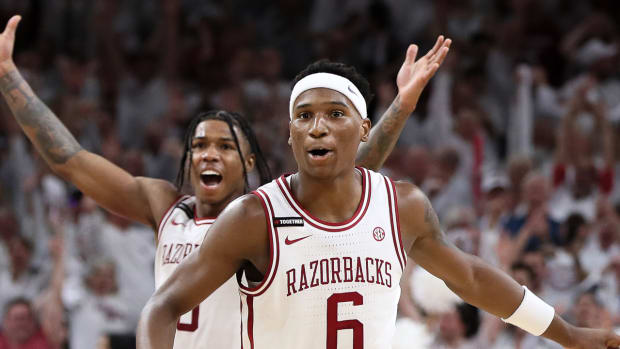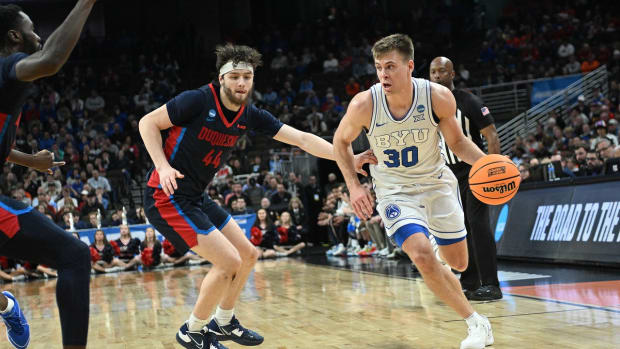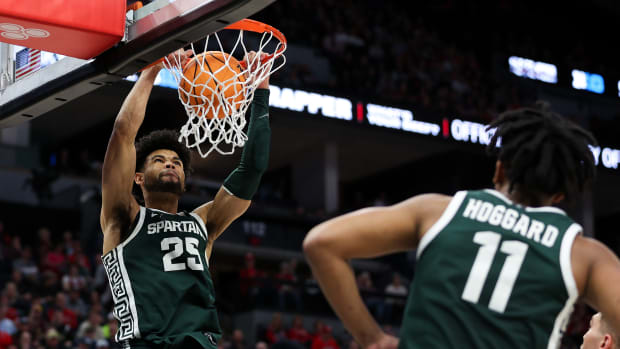March Madness: Virginia’s First Four Embarrassment Was Completely Avoidable
Over the years, a lot of teams have made the NCAA men’s tournament selection committee look bad by laying an egg after receiving a borderline at-large bid. Many times in those situations, it’s unfair to second-guess the decision in hindsight.
In the case of the Virginia Cavaliers and their latest March Madness horror show—a 67–42 embarrassment at the hands of the Colorado State Rams on Tuesday—it’s 100% justifiable to rip the committee. The Cavaliers never should have been invited, and the mess they left in Dayton lands squarely on the face of those who put them in the field. A whole lot of people—myself included—were sure this decision would end badly.
A few years ago, the NCAA invented its own metric for evaluating teams, called the NET rankings. It was supposed to be (and is) an improvement over the old RPI. But this year, in the case of Virginia, the committee disregarded the clear message its own numbers sent.
[ March Madness 2024: News & Analysis | Schedule | Bracket ]
Virginia was No. 54 in the NET. The committee gave the Hoos a bid anyway, making them the lowest NET team to receive an at-large selection in this year’s field. The predictive metrics didn’t like them either—Ken Pomeroy ranked the Hoos No. 69, 20 spots below the next-lowest at-large selection (South Carolina Gamecocks).
Who would have been a better selection? The NET itself says the Indiana State Sycamores, who were No. 28 and become the first top-30 NET team to be snubbed by the committee. (Surely the fact the Sycamores are from the mid-major Missouri Valley Conference instead of the ACC had nothing to do with that.) The KenPom numbers say the St. John’s Red Storm, who were No. 26, a mere 43 rungs ahead of the Cavaliers.
Other Big East teams also could have been considered better choices than Virginia, namely the Providence Friars. Fellow ACC member Pittsburgh, which beat Virginia by double digits in Charlottesville in February, could have been deemed a preferable alternative (though the Panthers’ nonconference schedule was not great). The Oklahoma Sooners of the Big 12 also had better metrics.
Instead, the committee saw a burning building of a selection and walked right into it. Virginia was 4–5 over its last nine games and last beat an NCAA tournament team on Feb. 3. Its ACC tournament performance was abysmal—scrapping back to beat the No. 11 seed Boston College Eagles in overtime, then losing to the No. 10 seed North Carolina State Wolfpack in OT. The Cavs were trending the wrong way and the committee took them anyway.
But the worst thing about taking Virginia was ignoring the number of woodshed whippings this team endured. The Hoos lost to the Wisconsin Badgers by 24, to the Memphis Tigers by 23, to the Notre Dame Fighting Irish by 22, to NC State by 16, to the Wake Forest Demon Deacons by 19, to the Virginia Tech Hokies by 34 and to the Duke Blue Devils by 25. More than half of those teams didn’t even make the NCAA field, but they destroyed Tony Bennett.
Did the committee members watch any of those games? If so, what sort of lies did they tell themselves about that team’s tourney worthiness?
Other factors that were disregarded: style of play and tournament history. Perhaps they should have been, if teams are to be judged in a vacuum of present-day competitiveness.

Cavaliers guard Ryan Dunn leaves the court after losing in the First Four on Tuesday.
Rick Osentoski/USA TODAY Sports
But shunning a fun team like Indiana State, which specializes in pretty offense and fast-paced basketball and has a virally popular centerpiece player, doesn’t help sell the tournament to casual fans. Especially when Virginia is guaranteed to make viewers’ eyes bleed with slogging pace and hideous offense. After the debacle against Colorado State, the Cavs rank 211th nationally in offensive efficiency and are still last in tempo.
And, yes, there is Virginia’s remarkable penchant for throwing up on itself in this tournament. There is “One Shining Moment” of an exception, of course, that being the 2019 national championship. That’s forever, and that’s huge, and it contained several key moments when Virginia was the anti-choke team. But they really should commission the statue of Kihei Clark for the pass he threw that got the Hoos past the Purdue Boilermakers and into that Final Four, because the rest of the résumé is replete with ghastly losses.
Here’s what has bookended that title: the historic initial first-round loss by a No. 1 seed to a No. 16 (UMBC Retrievers) in 2018; a first-round loss as a No. 4 seed to the No. 13 Ohio Bobcats in ’21; an NIT appearance in ’22; a first-round loss as a No. 4 seed to the No. 13 Furman Paladins last year; and now a 25-point First Four undressing as a No. 10 seed against fellow No. 10 CSU.
There is 6–0 in 2019, and there is a brutal 0–4 (with an NIT appearance) in ’18 and between 2021 and ’24.
Losing to the Rams was not unexpected—neither team really deserved to be in Dayton, one being disrespected by the committee and the other dubiously invited. But performing this poorly on this stage—again—was very Virginia.
The Cavaliers shot a grisly 28.2% from two-point range and 17.6% from three—far below the season percentages for this team. And it wasn’t like that was bad shooting luck, where good-looking shots kept lipping out. No, this was a barrage of air balls and no-hope bricks from outside the arc.
Trailing 18–14 with 9:20 left in the first half, Virginia went on one of the saddest runs of offensive ineptitude in tourney history. It was an eternity of scoreless futility, going the remainder of the first half and more than three minutes into the second. The total time without scoring was 12 minutes and 35 seconds of game clock, nearly an hour in real time. The score was 35–14 and the matter was decided before the Cavs put the ball through the basket again.
Their 42 points for the game was a First Four–record low, which is really something when you consider that four No. 16 seeds play in that round every year. It was reminiscent of the 2017 NCAA tourney, in which Virginia lost in the second round 65–39 to the Florida Gators.
It was another night this season in which Bennett had no strategic answers and far too little basketball talent to work with. There have been rumors percolating for weeks that he might be contemplating retirement, perhaps because he’s not a good fit with the modern college athletic world. This would be a brutal game to go out on—but that would partly be the fault of an NCAA tournament selection committee that bestowed a bid his team didn’t deserve.






